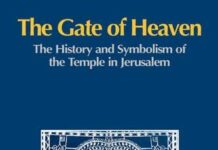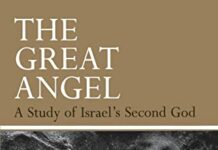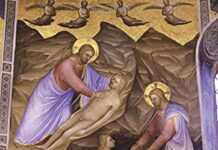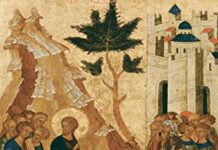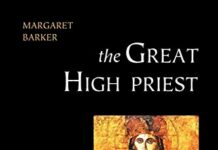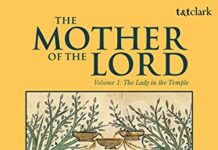
Ebook Info
- Published: 2005
- Number of pages: 132 pages
- Format: PDF
- File Size: 13.27 MB
- Authors: Margaret Barker
Description
User’s Reviews
Reviews from Amazon users which were colected at the time this book was published on the website:
⭐I have reviewed a few of Margaret Barker’s works before. Those works appealed to me while I was browsing titles on Amazon; I chanced upon them. This book, the Lost Prophet, is different. I first learned of this book years ago, from footnotes in Gabriele Boccaccini’s Roots of Rabbinic Judaism (pg. 94), while taking his course on Second Temple Judaism. I found those footnoted pages, which speculated about the ancient origins of Enochic Judaism, to be the most interesting of his book. Now, having discovered Barker’s works, I am glad to see this pre-exilic, first temple period probed and reconstructed to an even greater extent.Much of the subject matter in this work was not new to me since, as noted, I already had some familiarity with it. It is remarkable, though, how much of this research, published in 1988, must have presaged the more recent scholarship on Enoch. (I am still shocked, after checking the Wikipedia entry for Boccaccini’s international Enoch Seminar, that Barker has never yet participated.) Her insights are still applicable and, apart from their contribution to the wider Enoch scholarship, they also provide the germ for Barker’s more specialized first temple motifs. The enduring imagery of the royal temple cult, and the God-king connection which reappears in Barker’s the Great Angel (1992), are introduced here (albeit without the tiered El Elyon-Yahweh-king nuance). Other topics which appear here but are later covered in the Great Angel and Introduction to Temple Theology (2004) include the cosmic covenant, abuse of heavenly wisdom, and binding according to the divine name.Barker explores the far ranging concept of “correspondences” or paralleled figures and occurrences in heaven and on earth, especially as they surround the royal temple cult (67). This concept certainly informs her theory that the myth of the fallen angels, in its current form(s), likely mirrors the bitter contention that took place within the Jewish priesthood around the period of the Babylonian exile (106) as well as possibly during the Hellenistic era (40). The underlying mythology of the angels and the sons of God is certainly even older; there are more traces in Isaiah and Psalms. Furthermore, the heaven/earth analogies should challenge our instincts to partition the here and the hereafter. These need not unfold in sequence; rather, eternity exists “beyond time,” on another, interrelated level or realm of creation (73). Men can also pass between these levels and be transformed. With this in mind it becomes easier to understand the inaugurated eschatologies of the Qumran and Johannine communities.The chapter titled “the Vision of God” includes many points I had never considered before. Barker places 1 Enoch in the same framework as the OT prophetic books. As in Isaiah and other vision texts, likewise in 1 Enoch “contemplation of the Great Glory is…the preliminary to a commission to act as God’s agent” (56). She expands this pattern to apply to Jesus’s function in the NT. Although she does not explore its implications in depth, applying her schema to Jesus’s union with the Father, and the bearing their relationship has for his disciples, would not only shed light on early Christian thinking but also on early soteriology in particular (61).Speculation becomes much more tentative as we attempt to press our understanding of ancient peoples further back in time. Barker is never hesitant to push the limits, though, and her work is always the more interesting for it. As noted, she theorizes about the events surrounding the composition of the earliest text of 1 Enoch (The Book of the Watchers). Later, she hazards a few suggestions about the origins of the throne imagery in Daniel 7 and the Similitudes of Enoch, tying the sea, cloud, and judgment images all the way back to Israel’s most ancient harvest festival (100-104).As always, there is criticism to accompany the praise. The Lost Prophet was probably targeting a broad audience, so in it Barker occasionally attempts to suggest how the Enochic texts can inform, correct, or augment Christian devotion in the modern era. This may either appeal to or repulse the reader, depending on his outlook on faith. Barker clearly holds more liberal views on the environment, holistic spirituality, and the role of women in the priesthood (37-38). She also has a frustrating tendency to de-allegorize perceptions of Christianity, only to then re-allegorize them, with equally humanistic overtones, but in the light of Enoch. For more literal minded believers, she never once advocates that any of these ancient ideas might be approached literally today. Whenever I come across these well intentioned but clumsy digressions in scholarly works, I can only grimace. It is best left to the readers to synthesize these data with their closely held beliefs.Barker also returns on several occasions to Romans 8:18-23 in support of her view that the NT outlook was, like that of 1 Enoch, that a breach in God’s cosmic covenant subjected the creation to evil (86, 89). This is one plausible reading, but it need not be the only reading of these verses. Barker is attempting to contrast the ordered creation found in Genesis 1-2 with the memory of a (probably older) creation myth emphasizing divine conflict (as encapsulated in 1 Enoch). I think it equally possible that Paul is here referring not to the angelic sin as such, but to the circumstances of the Fall, and the curse upon creation effected because of Adam’s sin (Gen. 3:17-18). While there are Enochic tendencies in Paul’s writings, he is also a Deuteronomist and committed to the Deuteronomistic history. Only a few chapters earlier, in Romans 5, he lays the framework for viewing Christ as the Second Adam, again in reference to Genesis 2-3 and Adam’s sin. So the NT writers (or at least Paul) were not working within a purely Enochic world view. (Even the writers of the Book of the Watchers must have known that their creation account, old or no, had to contend with this other account in Genesis. Indeed, some would argue that 1 Enoch depends for its whole structure upon Genesis and the Priestly Source’s placement of the Enoch narrative (Gen. 5) anterior to the descent of the Nephilim (Gen. 6) in the Jahwist.) The thrust of the evidence available from other Near Eastern creation accounts, as well as the oldest biblical material (Psalm 74:13-14), may support a creation founded upon conflict, and by extension support for Barker’s cosmic covenant may be defensible. Building the argument for its use in the NT around Romans 8, however, may not be the best route to take.This book is very engaging, and that’s probably why I finished it in about one week, reading it mostly at lunch time and during breaks at work. Barker begins the work with a brief history of the Enoch manuscripts in the modern era; the rest of the book is pure biblical criticism; I was enrapt by all of it. Barker manages to be a visionary while at the same time remaining very cautious, especially with respect to dating these texts. In all that she suggests she advocates, as she does elsewhere, the purely Jewish underpinnings of the Christian faith. Unequivocally recommended.
⭐Margaret Barker is a true gem. I am very impressed with her and I highly recommend her work to anyone who suspects that the Old Testament has been deliberately altered and tampered with. In this book (and her others) she answers the question; “How could a group of (Supposedly) montheistic 1st century Jews accept Jesus as God?” Her answer in this book – and her others – is that the Jews and Israelites had never been monotheistic, that their tradition was of God the Father, his wife – also a God – and their Son, one of the angels of heaven. In this book and her others, she – very credibly – relates how Josiah in the 6th century deliberatetly converted Israel into a monotheistic religion by producing the forgery of Deuteronomy. Fabulous stuff!
⭐I liked everything about this book!
⭐The book of Enoch, while not in the traditional Western Christian Canon, is in the Canon of the Coptic church. This book tells of its influence as a first century BC text. It is an interesting read, but not as good as some of Barker’s other books.
⭐like most of her books it was work to read but much to learn and indeed much to ponder and think about
⭐This book came in great shape and is hard to find. I wanted a women’s perspective on saints and prophesy.
⭐Anything that Margaret Barker writes is interesting and informative.
⭐The Lost Prophet is a slim book first published over two decades ago by SPCK and is now available as a reprint. It still deserves to be read. In addition to providing a good introduction to Margaret Barker’s scholarship, it will in many ways remind Latter-day Saints of Hugh Nibley’s fascination with noncanonical texts that carry the name Enoch and also with related textual materials. Scholarly interest in these texts was stimulated by the discovery of fragments of an important Enoch text among the Dead Sea Scrolls (pp. 12-14). Barker sees the Book of Enoch as “very strange,” and she argues that the very “shock of its strangeness can be a very good thing” (p. 16) since early Christians were at home in the world those texts depict (p. 16). She also believes the Enoch texts provide a window into the world of the faithful prior to the Babylonian captivity (p. 19), as well as into the world of Palestine during the ministry of Jesus of Nazareth.In addition, it is in the Enoch materials that we see references to an Elect One (the Son of Man), to heavenly ascensions, special endowments, commissions and covenants, and so forth (pp. 52, 58), all of which Barker sees as central elements in the conceptual furniture of the world of Jesus and his immediate followers.It was in one of these journeys to heaven that Enoch encountered angels and the tree of life (p. 24), as well as heavenly or holy mountains (pp. 24, 48, 51-53), and was endowed with wisdom and learned of many marvelous things. These are all temple motifs familiar to Latter-day Saints, and Barker’s reflections on such things should be of interest to them. Even though they might question some of her views, as a Latter-day Saint I still learn from her own perceptive encounter with a literature later despised by Jews and then suppressed by Christians, a portion of which was recovered by Joseph Smith very early in his career as a seer.
⭐Another superb book from Dr Barker who really gets to the root material of Judeo Christian belief. No dogma here, you can read this and her other works and draw your own conclusions. This book, as well as being easily readable and of general interest will also be of interest to Qaballists who can read between the lines.
⭐A truly fascinating read for anyone who is serious about understanding the bible and the culture it came out of. The author draws on both canonical and noncanoical books to show that the second temple period, in the holy land was probably more religiously diverse than what we normally imagine.
⭐Scholarly, thorough, honest, the research this book presents never fails to support its thesis. Its eye-opening revision of the conventional view is a highly valuable addition to our understanding of the Old Testament and indeed the whole Bible.
⭐Well written, gives a great background to the book of Enoch.. An important work this.
⭐It is incredible, but true, that the vast majority of books on Biblical studies have been written by people who have never read 1 Enoch and know nothing about it. In fact it is the key for understanding the New Testament, and makes sense of all those things that are not explained by the reference to the Old Testament in either its Hebrew or Greek forms. For instance Demons, exorcisms and the Son of Man. Margaret Barker writes a useful introduction which should be read alongside the book of 1 Enoch itself.
Keywords
Free Download The Lost Prophet: The Book of Enoch and Its Influence on Christianity in PDF format
The Lost Prophet: The Book of Enoch and Its Influence on Christianity PDF Free Download
Download The Lost Prophet: The Book of Enoch and Its Influence on Christianity 2005 PDF Free
The Lost Prophet: The Book of Enoch and Its Influence on Christianity 2005 PDF Free Download
Download The Lost Prophet: The Book of Enoch and Its Influence on Christianity PDF
Free Download Ebook The Lost Prophet: The Book of Enoch and Its Influence on Christianity
